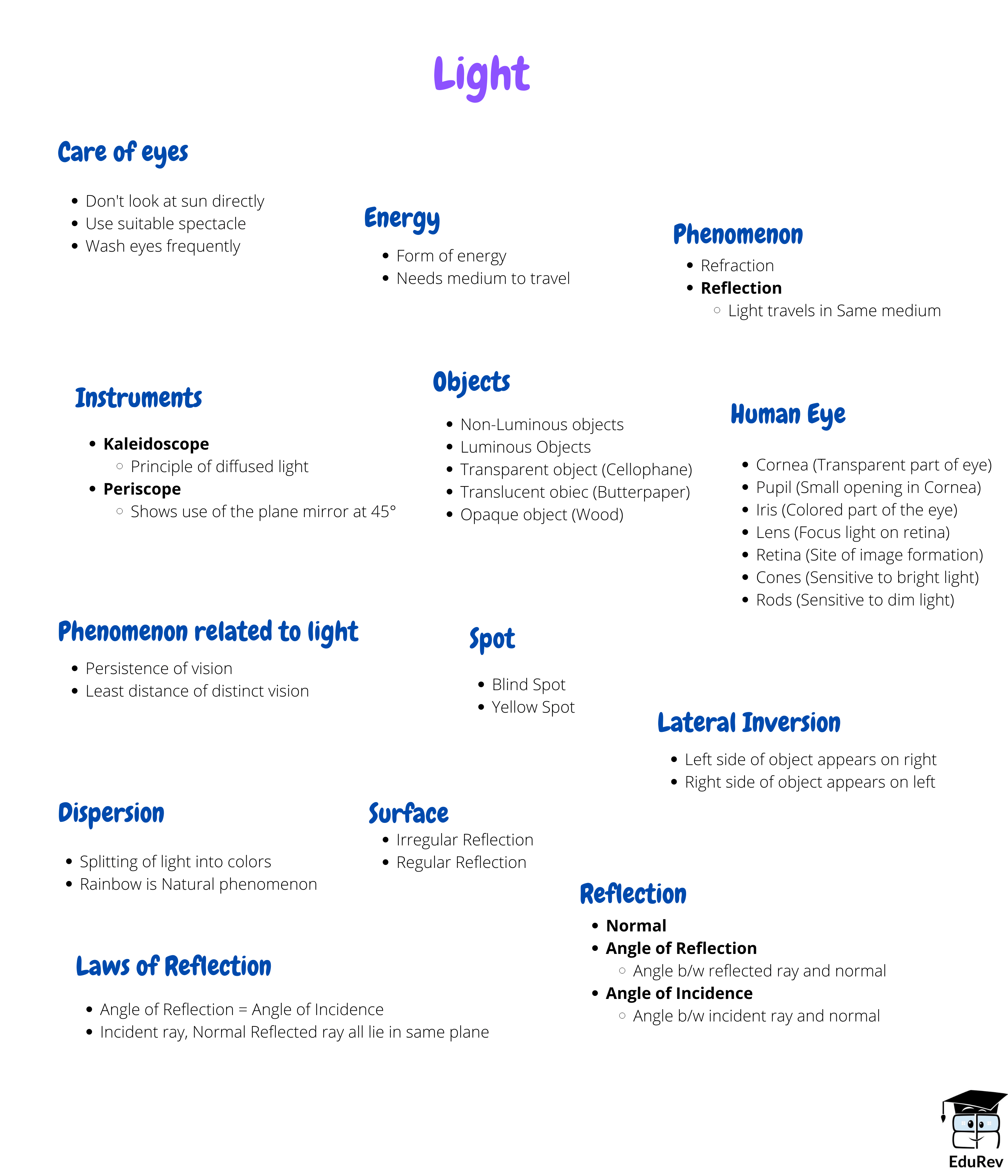Class 8 Exam > Class 8 Notes > Science Class 8 > Mind Map: Light
Mind Map: Light | Science Class 8 PDF Download

The document Mind Map: Light | Science Class 8 is a part of the Class 8 Course Science Class 8.
All you need of Class 8 at this link: Class 8
|
92 videos|296 docs|44 tests
|
FAQs on Mind Map: Light - Science Class 8
| 1. What is light and how does it travel? |  |
Ans. Light is a form of electromagnetic radiation that is visible to the human eye. It travels in straight lines called rays or light beams.
| 2. How does light interact with objects? |  |
Ans. Light can interact with objects in three main ways: absorption, reflection, and transmission. When light is absorbed, it is converted into another form of energy. When light is reflected, it bounces off the surface of an object. When light is transmitted, it passes through the object without being absorbed or reflected.
| 3. What is the speed of light and why is it considered the fastest thing in the universe? |  |
Ans. The speed of light in a vacuum is approximately 299,792 kilometers per second (186,282 miles per second). It is considered the fastest thing in the universe because no other known object or particle can travel faster than light. According to Einstein's theory of relativity, as an object with mass approaches the speed of light, its energy and momentum increase infinitely, making it impossible to reach or exceed the speed of light.
| 4. How does light enable us to see colors? |  |
Ans. Light consists of different wavelengths, and each wavelength corresponds to a specific color. When light interacts with an object, some wavelengths are absorbed while others are reflected or transmitted. The wavelengths that are reflected or transmitted reach our eyes, and our brain interprets them as colors. For example, if an object absorbs all wavelengths except for those corresponding to red, we perceive the object as red.
| 5. Can light bend or change direction? |  |
Ans. Yes, light can bend or change direction when it passes through different mediums with varying densities. This phenomenon is known as refraction. When light travels from one medium to another, such as from air to water, it changes speed and direction. This is why objects submerged in water appear to be in a different position than they actually are. Refraction is also responsible for optical illusions, such as the bending of a straw in a glass of water.
Related Searches
















